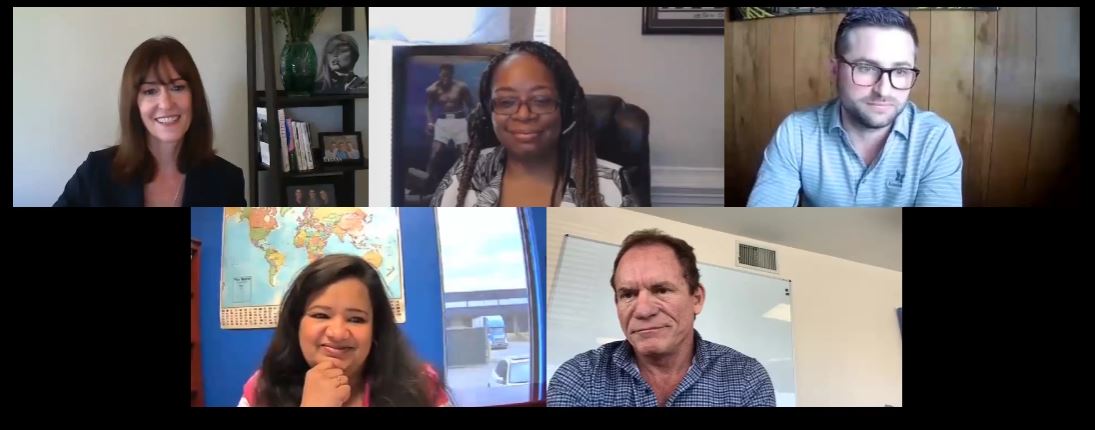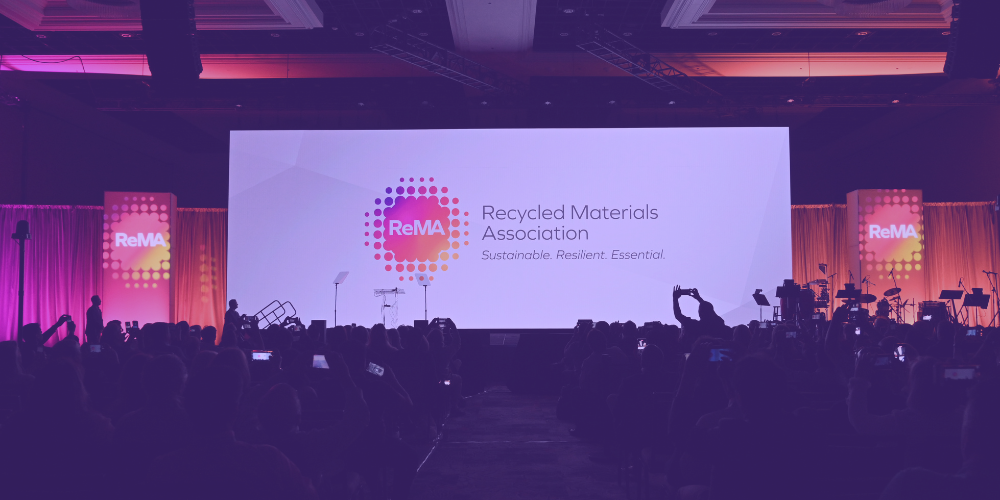The following article is from the Diversity in the Recycling Industry: Successes, Lessons Learned, and Ways to Improve session at ISRI2021. If you would like to watch this session in its entirety, you can still register for ISRI2021 here. This session, along with others, are available to attendees on demand.
Studies show companies with diverse leadership are more profitable and achieve more earnings. But how can business leaders ensure their companies are diverse and inclusive in every aspect from hiring practices to company culture? During the session Diversity in the Recycling Industry: Successes, Lessons Learned, and Ways to Improve at ISRI2021, presented by ISRI’s Women in Recycling Council, panelists provided insight and shared experiences on making companies more diverse and inclusive for all.
“Diversity is being invited to the party, and inclusion is being asked to dance,” says Stef Murray, vice president of human resources & chief diversity officer at Schnitzer Steel. For Murray, diversity and inclusion go hand in hand and are a “necessity, a business imperative.” Companies can look to profits to see its impact on business, says Sean Daoud, vice president & treasurer at PNW Metal Recycling, Inc. But diversity also requires promoting different perspectives and mindsets. A company with diverse leadership can make good decisions and promote strong ideas for future success. “Diversity is success,” he says.
Giving People a Voice in the Workplace
Promoting a diverse workforce requires creating a space where people feel comfortable speaking up and expressing opinions. In George Adams’ experience, people often hesitate expressing their thoughts and opinions to supervisors. As chief executive officer at SA Recycling, Adams makes sure his employees know their voices and opinions will be heard and respected. “You have to make people realize that you respect what they’re going to say, you want to hear what they’re going to say, and you need to empower them to do that,” Adams explains.
For Adams, the worst case scenario for a company is having a “yes” person who only tells you what they think you want to hear. Instead, you want people to feel comfortable contributing to conversations. In an effort to create that space, Adams ingratiates himself amongst his staff. When he goes to the yard, he dresses like staff working in the yard. He reads body language, and if he thinks someone is reluctant to speak, he insists they let him know if he’s wrong on an issue. Running a company means trusting people on the ground. “You have to support them, encourage them, and make sure they’re comfortable speaking up,” he says.
Setting Goals, Not Quotas
The panelists cautioned against using quotas to achieve more diversity. Adams doesn’t hire a certain number of women or people of color (POC), rather he believes in promoting everyone up, and allowing the best people to succeed. That strategy works for SA Recycling—76% of employees are minorities, 63% of supervisors are minorities, and 30% of senior management are women. Finding the best people for the job and giving everyone a chance can naturally result in diversity. Murray agrees quotas don’t necessarily work. Instead, she recommends setting goals and targets for diversity, just as companies set targets for anything else.
Overcoming Struggles in Building a Diverse Team
When scouring the job pool for diverse candidates, companies many run into difficulties. For example, there’s a lack of knowledge surrounding the recycling industry, and candidates from diverse backgrounds may not be aware of all the career opportunities the industry has to offer. It’s important to highlight all its changes and progress. The industry was “green before green was cool,” Murray says, which could make it a more attractive industry to Millennials and Generation Z. The industry actively promotes from within, which means steady career growth.
Showing people how the industry differs from preconceived notions is important when tackling diversity, Daoud says. Recycling is often seen as a dirty business which is inaccurate considering how it’s evolved. “The public, the individuals we want to hire, need to understand it’s a great business,” Daoud says. “Without us, the world that we live in would not be the same.”
When recruiting, companies should think outside the box to attract candidates from all walks of life, says Nidhi Turakhia, executive vice president at Allied Alloys. She suggests exploring unique places for candidates, including rehab centers, second chance candidates, and job fairs at local community colleges and schools. Job postings and descriptions should attract all genders, cultures, races, and people from different backgrounds, she adds.
Taking these steps can help grow a diverse and inclusive workforce and a more diverse industry overall. But there’s no endgame when it comes to diversity and inclusion. There’s always more work to do. “Diversity and inclusion is not a destination, it’s a journey,” Murray says.
Photo caption: (From top left going clockwise) Sandy Brooks, Stef Murray, Sean Daoud, George Adams and Nidhi Turakhia discuss the importance of fostering a diverse and inclusive workplace for all.
Additional Resources













